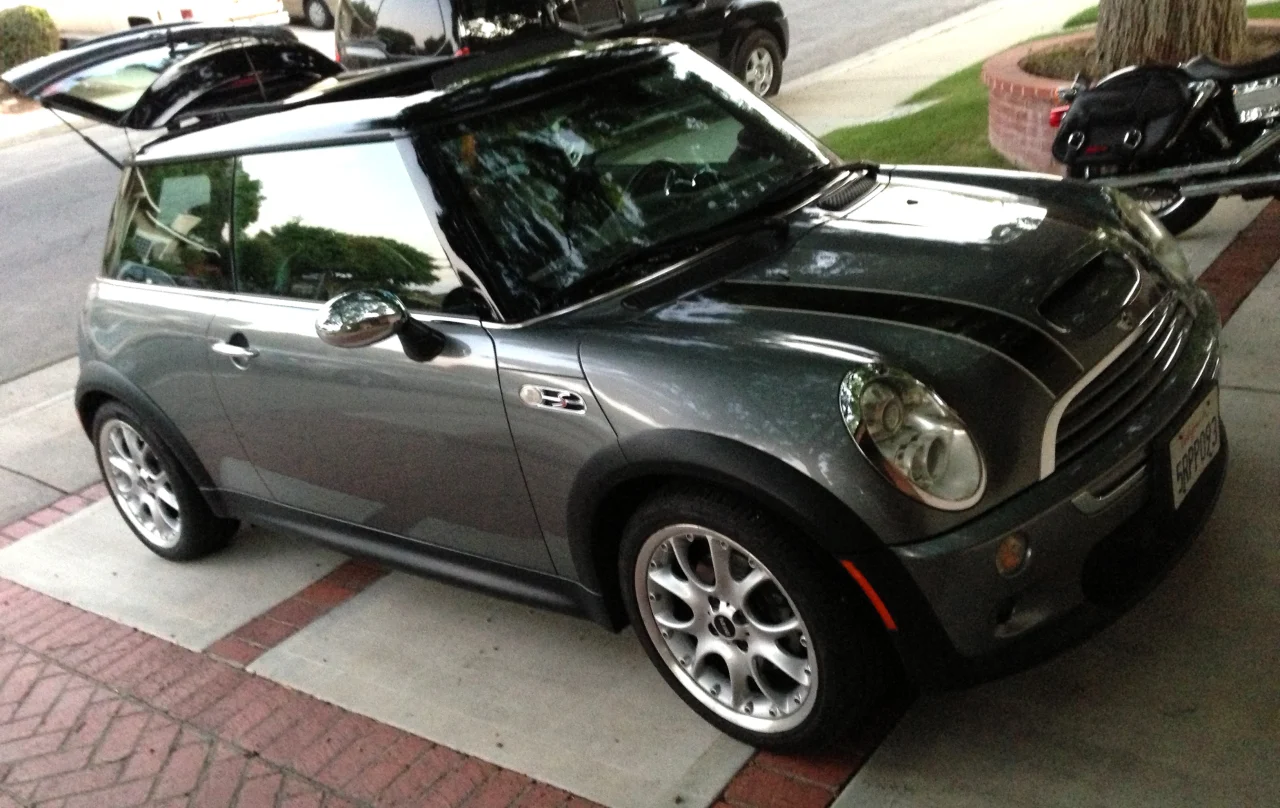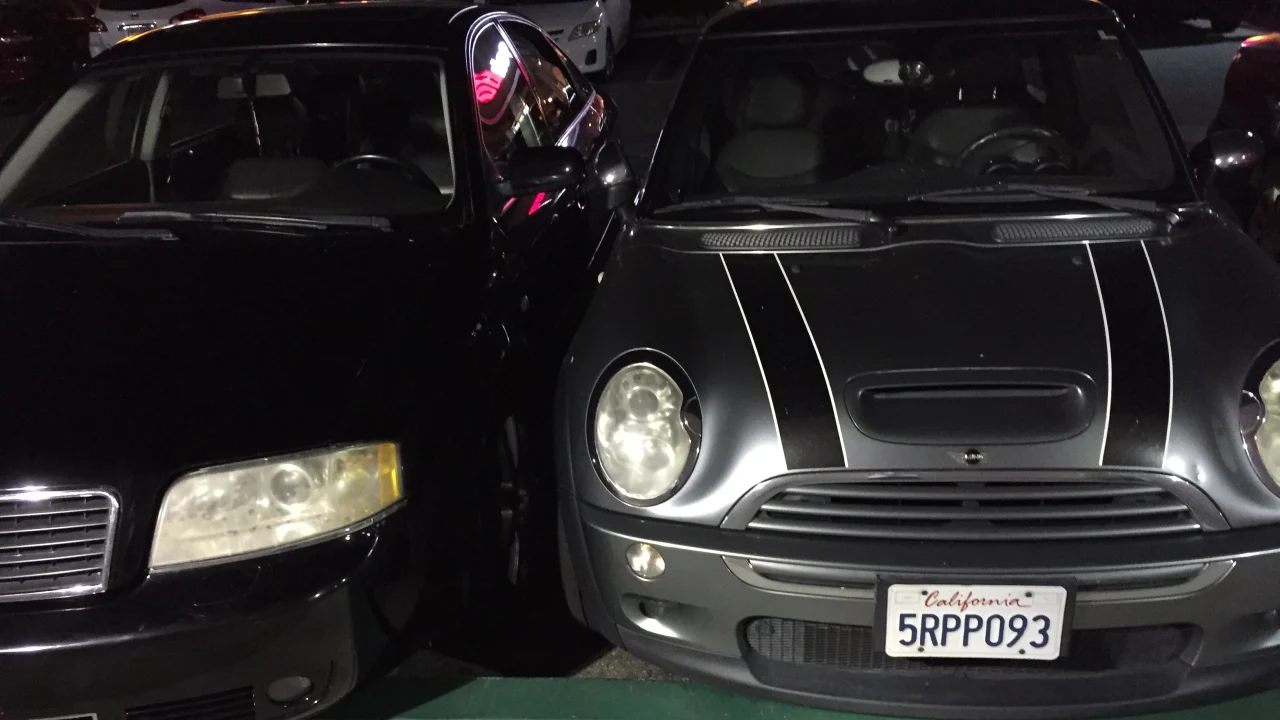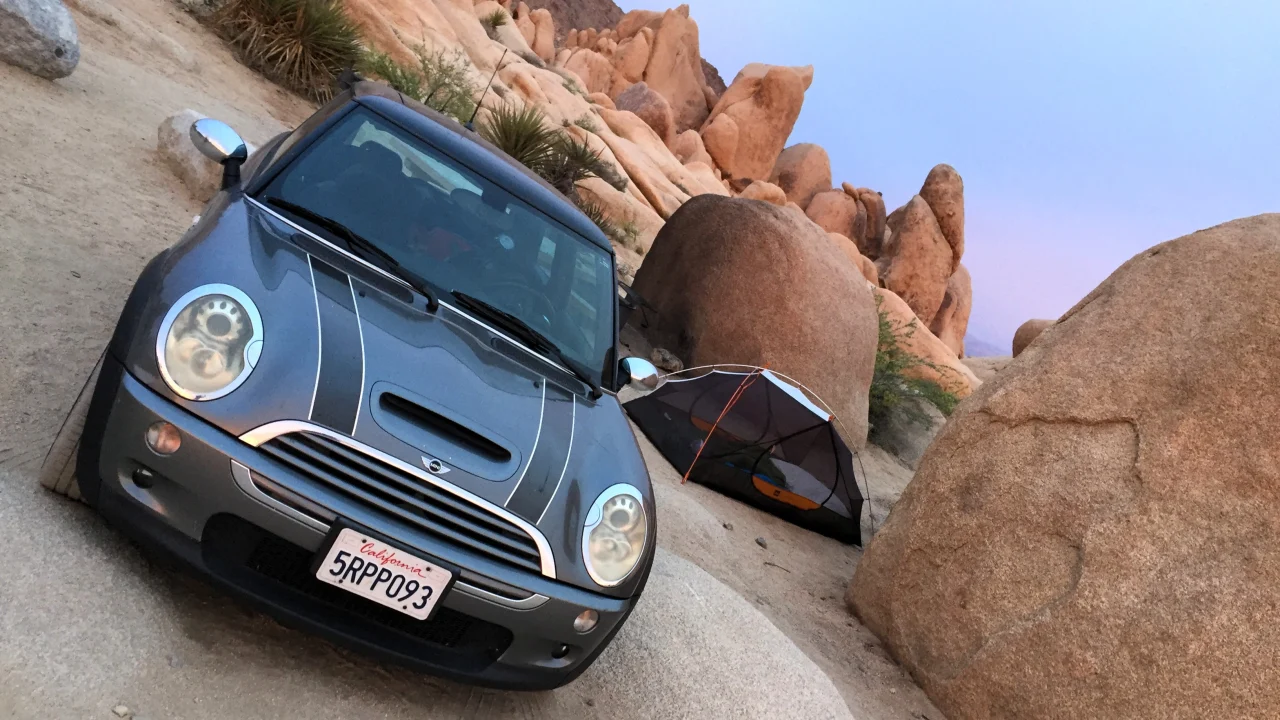Showing up in my Facebook Memories the other day marked 12 years since I bought my old Mini Cooper S. I had moved to Los Angeles to work at Hot Rod and needed a car since I had been depending on subways and a trusty bike to get around Brooklyn.
My hunch suggested the Mini Cooper S offered the best quotient of driving fun, utility, and cost, though I recall testing a modified Dodge Neon SRT-4 and an unusual Volkswagen Type 3 notchback. I visited a host of dealerships all over the San Fernando Valley, some sketch, some legit (both cars and dealerships). Mandatories were a stick-shift and sunroof. The prices seemed a bit too strong for my tastes, so I checked out a naturally aspirated Mini Cooper around Studio City; it had enough grunt, but was entranced by the novelty of a supercharger.

Then, I found a nice one on Craigslist. It was a silvery charcoal, invoking the color of the Maria Martinez pottery that my mom liked. The original window sticker showed something like 10 grand in options, from leather to fancy headlights to the instrumentation package and more. I drove up to Valencia and tested it. I was in love. But it had close to 100,000 miles on it, which my lizard braid said could be a sign of trouble. Nonetheless, feeling this was the best Mini Cooper S in town, I couldn’t help myself and snapped it up before someone else had the same idea. I didn’t bargain with the seller as much as I should have.
During the test drive, the “check engine” light was on. Seller guaranteed me everything was kosher, but I was new to the state of California and didn’t know about the subculture of smog-testing. I was under the impression that it was just a light that a mechanic needed to turn off, but the smogger failed me because of the light, meaning he drove the car into the stall to fail/financially ruin me. Now I needed to figure out if something was wrong, a dance that I don’t recall other than learning the hard way that the world of smogging was a corrupt money-grab. I wrote to the seller, a former New Yorker who ran a hair salon academy in Sherman Oaks, asking to go halfway in the $300 of repairs, but he never responded. Lesson learned.

Nonetheless, this car was a blast driving in Los Angeles: great on the exit ramps, great on gas (though Premium in California was enough to almost turn me to hybrids), and I was enough of an enthusiast that I didn’t blink when stuck in traffic with a manual-transmission car. It was rough around the edges, but it encouraged me to drive it like I hated it—the best kind of car. From the outside, it was pristine, but then its Teutonic heritage began showing itself through the veneer: the driver-side window stopped working. Then the air conditioning followed suit. One time, I recall driving up the hills of Encino or vicinity when a spark plug wire shot out from the engine. Thankfully, I had AAA; unfortunately, the spark plug was stuck.
I didn’t sign up for this. Or maybe I did.
I became rather friendly with the folks at MiniWorx in Culver City. Repairs were never cheap because, as I learned, used German cars are more expensive than new ones. Then, freshly married, we leased a 2017 Mazda3 Grand Touring hatchback with a six-speed, which meant the Mini had to go as we only had one parking spot at our apartment. I sold it for a lot less than what I had paid, the amount which had doubled due to repairs over several years. The gentleman who bought it was a policeman who had a hobby of buying Minis and fixing them up. That’s the talent I should have gained from my experience, but as this was my/our sole vehicle of transportation, that was an impossibility.

Today, I wax poetic about the little roller skate, though it pains me to see what Mini has become. Whatever happened to that brand that built fun cars? There’s no more manual transmissions, there’s a new emphasis on EVs, the Clubman no longer exists, and the Countryman now is not so mini. Is this really the same automotive brand that Crispin Porter + Bogusky helped launch?
All this reminds me of Italian car owners. “I LOVED my Alfa, but it was in the shop more than the road.”
“Would you own another one?”
“In a heartbeat!”
I’m not as much of a masochist, but I have learned that German cars are built to be leased, not owned.

